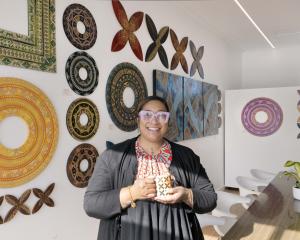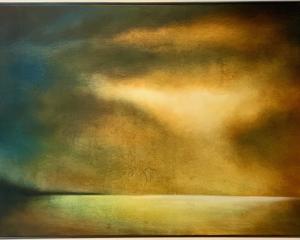Running around the house in funny hats and false noses with Pablo Picasso was nothing unusual for Anthony Penrose.‘‘I was going blithely along not realising how incredibly special and privileged that was,'' the British photography curator says.
As the child of war and portrait photographer Lee Miller and surrealist painter Ronald Penrose, he spent many hours with the Spanish painter, sculptor and designer regarded as one of the most influential artists of the 20th century.
Picasso painted six portraits of Penrose's mother and she photographed him more than 1000 times.
‘‘They were both close friends of Picasso. I grew up with him as a much loved uncle. He was warm and friendly.
''It was not until he was about 14 years old and his French teacher asked his class to talk about what they did in the holidays that it changed.
‘‘I said I'd been to the south of France. My teacher asked why we'd gone at that time of year. I said to visit Picasso. There was this stunned shockwave that went around class.
‘‘It was then I realised what a big deal that was. At that moment I looked at it through other people's eyes.
''He still did not make a big deal out of the relationship with the artist he describes as ‘‘a wonderfully permissive guy, friendly and kind, who liked playing with us''.
‘‘He liked goofing about. He had this whole routine where he liked us to put on masks and funny hats and false noses and caper about wearing them.''
For many years he described the relationship as a ‘‘pleasant and privileged'' memory.
But when hundreds of his mother's negatives and prints were discovered boxed up and stored in the attic of his family home, things changed.
He gave up dairy farming - something he believed he would still be doing today if the photographs had not been found - and dedicated himself to saving his mother's work, setting up the Lee Miller archives and researching Picasso and his family's relationship with him.
Then came the idea to write a children's book about Picasso and he titled it The Boy Who Bit Picasso, just as he had done.
‘‘It became a bestseller. It's been translated into 11 languages. There are children all over the world looking for artists to bite.''
He loved talking to children about the relationship and often, when travelling to speak about his family, he also held talks for children, as he was doing in Dunedin.
‘‘Children love to hear the stories about his pets. He had a goat and a monkey. They pick up the most bizarre and wonderful things. It's very stimulating for me.''
He was about to release a second children's book, this time on Spanish sculptor and ceramicist Joan Miro, another artist with whom the family spent time.
Mr Penrose now describes himself as a photo curator, as he and a daughter look after 60,000 negatives and 40,000 prints and manuscripts.
‘‘You could say I've turned my dead parents into a cottage industry.
‘‘We have a staff of eight and are constantly making exhibitions and travelling around the world. We hope to bring one to New Zealand in 2018.''
His parents' work was still significant, because surrealism was an art movement that had not really died, he said.
‘‘In many genres there is a surrealist influence.''
His mother's photographs also provide a glimpse of history, as she began her career as a photographer in Paris in 1929 - she was a supermodel of her time before that - and went on to cover the war in Europe as the only female combat photographer with the United States Army.
‘‘She had a remarkable career. She witnessed some of the huge battles of the war and the liberation of concentration camps.''
After the war she returned to take pictures of artists, before reinventing herself as a gourmet cook and packing up her photography and hiding it away.
There was a lot of interest from historians researching social history and the view and experiences of women at that time, he said.
‘‘The thing I find today talking to young people, particularly girls, is they are fortunate to not have a clue how difficult it used to be for a woman to have a career. They were expected to get married, be tied to the kitchen and have babies.''
On a national tour speaking to decorative art societies, Mr Penrose was looking forward to his visit to Dunedin, his third, although his last was in the late 1970s or early 1980s.
He was looking forward to catching up with some old friends while here.‘‘I love it. I come back to New Zealand as often as I can.''
To see
Otago Decorative and Fine Arts Society inaugural lecture, ‘‘Lee Miller and Picasso'', Hutton Theatre, March 9, 7.30pm.












